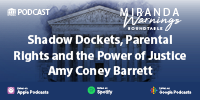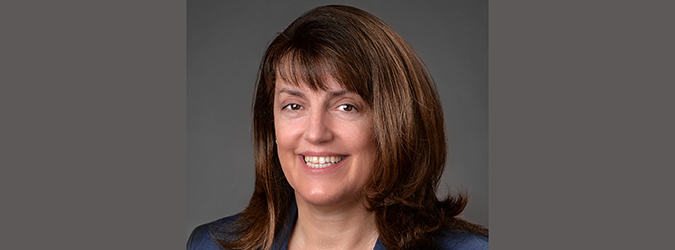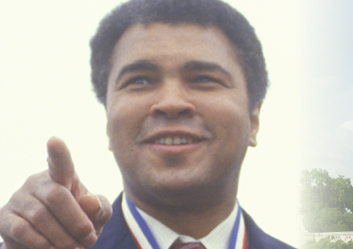‘F— School’ How a Cheerleader’s Snapchat Rant Went to the Supreme Court and its Impact on Schools Going Forward
7.23.2021
It reads like the plot of Mean Girls or Ferris Bueller’s Day Off or The Breakfast Club. Only this time around, Molly Ringwald and Ally Sheedy would have to be cast as the teens’ mothers.
“The facts of this case have all the elements of a teen movie. That’s what I really like about this case,” said Candace Gomez, co-chair of Bond, Schoeneck & King’s school law practice. “What do we have? We’ve got to have a mean high school student who’s angry about something in the school environment, who’s bordering on the edge of maybe being a bully, and then we’ve got some people that are subject to this bullying. So, this is our next summer blockbuster here.”
The real-life plot goes like this: Brandi Levy was a junior varsity cheerleader at Mahanoy Area High School, in Mahanoy City, Schuylkill County, Pa. During her sophomore year in 2017, she again tried out for the varsity cheerleading team and was again assigned to the JV squad. This time it particularly irritated Levy because a freshman made the varsity team over her.
The next weekend, Levy and a friend, while hanging out at the Cocoa Hut, a convenience store in downtown Mahanoy City, took to Snapchat to vent about the unfairness of it all.
In her first post to her 200-plus followers on Snapchat, she held out her middle fingers with the caption: “F… School F… softball F… cheer F… everything.” In a follow-up post, she said, “Love how me and [another student] get told we need a year of jv before we make varsity but tha[t] doesn’t matter to anyone else?” The caption also contained an upside-down smiley-face emoji.
School officials learned of the post and suspended her from the JV cheerleading team for the upcoming year. Their rationale was that the post and caption violated team and school rules, namely: respect for school, coaches and others; avoiding foul language and inappropriate gestures; refraining from negative information regarding cheerleading on the internet and the requirement that students “conduct themselves in such a way that the image of the Mahanoy School District would not be tarnished in any manner.”
What happened next was a lawsuit that made it all the way to the highest court in the country, the implications of which are still being analyzed as a new school year begins this fall.
School law experts recently addressed the history of student speech, the specifics of the Mahanoy Area School District v. B.L. case, and the practical effects this new precedent will have on school practices in New York.
“[S]tudents need to be permitted to try out their voices, to speak and even say dumb and obnoxious things. But they also need to be governed and taught,” said Seth Gilbertson, associate counsel for the State University of New York’s Office of University Counsel. “Sometimes they even need to be taught that the things they say are dumb and obnoxious.”
Gilbertson, who recently served as the moderator on a New York State Bar Association CLE webinar entitled “Regulation of Student (and Cheerleader) Speech: ‘F— School’? SCOTUS Mahanoy Area School District v. B.L.” added: “And then came the internet.”
Disruption Standard
Before we can get to the ending of Levy’s saga, we must first go back to 1965, when a group of students in Des Moines, Iowa, went to school wearing black armbands in protest of the Vietnam War and in support of a proposed “Christmas truce.” This set off a constitutional debate commonly referred to as the “Tinker case” (Tinker v. Des Moines Independent Community School District) regarding the regulation of student speech by school administrators that was ultimately decided by the U.S. Supreme Court.
The students who wore the black armbands were suspended. The school board a few days later voted 5-4 to maintain the ban and not to reinstate the students.
Robert Ruggeri, senior managing counsel for the State University of New York, explained that the district court upheld the prohibition on the armbands.
“The court acknowledged that wearing the armband is ‘a symbolic act’ protected as speech under the First Amendment,” said Ruggeri. “However, the judge determined the school district’s ‘concern for the disciplined atmosphere of the classroom’ outweighed the students’ free speech rights.”
While the district court’s ruling was based on the school’s “fear of a disturbance from the wearing of the armbands,” the Supreme Court had a different take. The decision included the famous line that students do not “shed their constitutional rights to freedom of speech or expression at the schoolhouse gate.”
Ruggeri said the Supreme Court ruling determined that the Tinker students caused “discussion outside of the classrooms, but…no disorder.” The majority opinion ruled that the school didn’t have reason to anticipate substantial interference with the work of the school or rights of other students. However, the Tinker decision doesn’t require school officials to wait for a disruption to occur.
Ruggeri noted that it cannot be an “undifferentiated fear of a disturbance” but rather a reasonable fear of a disturbance. The main test of Tinker is the “substantial disruption” test but the speech also cannot interfere with the rights of other students.
Subsequent cases have also mapped out exceptions for permissible regulation of student speech in schools, such as disciplining students for on-campus speech considered vulgar or promoting drug use, but new questions have arisen in the digital age regarding schools’ ability to regulate student speech that occurs off-campus.
So the Mahanoy case hinged on whether Tinker, which holds that public school officials may regulate student speech that would materially and substantially disrupt the work and discipline of the school, applies to student speech that occurs off-campus.
Levy, in her lawsuit, argued that her suspension from the team violated the First Amendment and that the school and team rules she allegedly violated are overbroad, their viewpoint discriminatory; and unconstitutionally vague.
“The Third Circuit Court held that Tinker does not apply to off‐campus speech – that is, speech that is outside school‐owned, operated, or supervised channels and that is not reasonably interpreted as bearing the school’s imprimatur,” said Gomez. “Because [Levy]’s speech took place off campus, the panel concluded that the Tinker standard did not apply, and the school consequently could not discipline [Levy] for engaging in a form of pure speech.”
The Supreme Court, in its ruling June 23, upheld the Third Circuit’s decision that Levy’s First Amendment rights were violated, but noted that, “Unlike the Third Circuit, we do not believe the special characteristics that give schools additional license to regulate student speech always disappear when a school regulates speech that takes place off campus. The school’s regulatory interests remain significant in some off-campus circumstances.”
Jay Worona, deputy executive director and general counsel of the New York State School Boards Association, said the familiar 1969 Tinker standard remains intact – speech causing substantial disruption or a reasonable forecast thereof, or interfering with the rights of others, is not protected. But, he said, mere criticism of school programs or policies, vulgar venting without disruption or targeting of harm to an individual may not be enough.
Worona noted that threats, bullying and harassment, or even giving out the answers to a test online, if it occurs off school grounds, may be addressed by administrators as long as it impacts the school community.
“You know in this day and age the major way that people are bulled is on the internet…,” said Worona. “… If we weren’t able to protect schools with those particular exceptions, I’m not exactly sure how we’d manage to protect students any longer.”
(To learn more about this case, click here to purchase the on-demand version of the CLE.)






